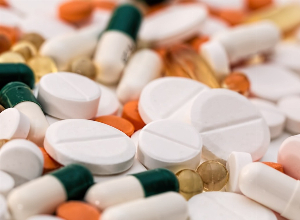Acromegaly: Everything there is to know!
Published 17 Sep 2024 • By Candice Salomé
Acromegaly is a chronic condition caused by hypersecretion of the growth hormone GH. This hypersecretion can develop before or after puberty, bringing with it its own set of symptoms: an increase in the size of the hands and feet, a thickening of the nose and tongue, an increase in the size of the jaws, etc.
So what are the causes and symptoms of acromegaly? How is it diagnosed? How can it be treated?
We explain it all in our article!

What is acromegaly?
Acromegaly is a rare disease (with a prevalence of 60 cases for 1 million people) caused by chronic exposure to growth hormone (GH). In acromegaly, this hormone is excessively produced by a tumour located in the pituitary gland of the brain.
What are the symptoms of acromegaly?
The symptoms of acromegaly appear insidiously and progress gradually. The main physical changes concern the size of the hands and feet, which become bigger. Patients have to buy bigger shoes or replace rings because they no longer fit on their fingers. There is also a thickening of the nose and tongue. The jaws become bigger as well, sometimes with an advancement of one of the jaws (known as prognathism).
Other symptoms may also be present, such as headaches or visual disturbances, because the tumour is located in the brain and can compress certain nerves (particularly the visual nerve).
Acromegaly can also give rise to cardiovascular complications (high blood pressure or heart failure) or endocrine problems, causing erectile dysfunction or disturbances in the menstrual cycle.
How is acromegaly usually diagnosed?
Acromegaly is often diagnosed late, with an estimated average of 5 years between the appearance of the first symptoms and the final diagnosis. The diagnosis is established on the basis of the typical physical features of the disease mentioned above. The first step to confirming acromegaly is carrying out an assay of GH and, more importantly, an assay of IGF1 (insulin-like growth factor, a protein produced by the liver in response to stimulation by GH). When acromegaly is diagnosed during childhood or adolescence, the condition is known as gigantism.
What are the existing treatments for acromegaly?
The first-line treatment is usually surgery which is performed in order to remove the pituitary tumour if possible. However, before surgery, patients may be given a drug treatment, which may also be used if surgery is contraindicated or has failed.
The following drug treatments are available:
- First-generation somatostatin analogues: octreotide ou somatuline,
- Second-generation somatostatin analogues: Signifor,
- Dopaminergic agonists: Cabaser,
- GH antagonists: Somavert,
- A combination of several of the above medicines is sometimes possible.
In addition to these medications, it may sometimes be necessary to ask for psychological support, depending on the impact of the disease on the patient's everyday life.
The treatment of acromegaly is a complex process and is specific to each patient. It should be decided by an endocrinologist in agreement with the patient. If you have any doubts about the symptoms or the potential side effects, it is essential to discuss it with your healthcare team, in order to get the most appropriate treatment for your particular case.
Patient support groups for acromegaly sufferers
If you know someone who has been diagnosed with acromegaly or if you suffer from it yourself and you feel the need to talk about it, or simply to share your experience with other patients who find themselves in the same situation, don't hesitate to take a look at the Carenity forum on acromegaly, or contact Acromegaly patient support groups.
Was this article helpful to you?
Give it a like and share your thoughts and questions with the community in the comments below!
Take care!
Comments
You will also like

Fifteen percent of osteoporosis patients who take 'drug holidays' suffer bone fractures
7 May 2018 • 8 comments

Photo testimonial: Years of diagnostic uncertainty facing Ehlers-Danlos Syndrome
6 Feb 2019 • 4 comments

 Facebook
Facebook Twitter
Twitter
